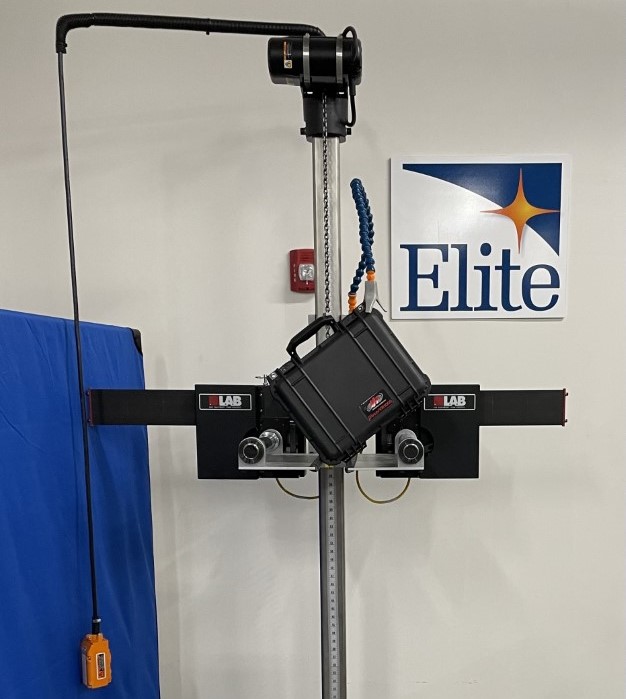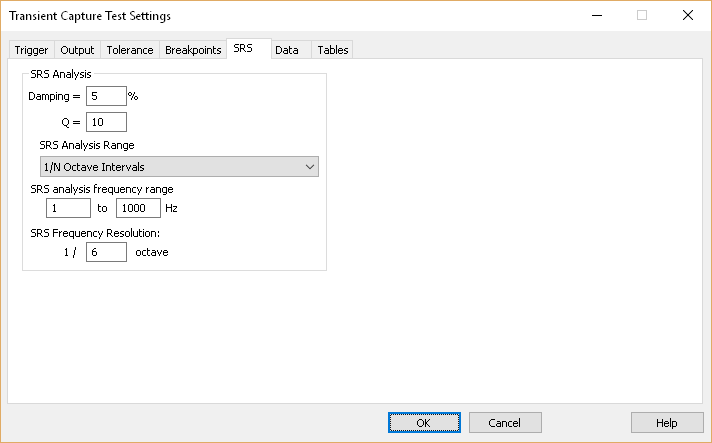Record Transient Events
The Transient Capture software offers an easy interface to record a transient event during a shock test. Before running the test, the user defines the trigger parameters, including the G level, required to start the recording.
Transient Capture is an add-on to the Shock software module. When setting up the shock test profile, the user can define parameters such as pulse type, alignment, and tolerances to meet a test standard.
Shock Software
Additional Features
- Record 524,032 samples (64-bit version) or 65,280 samples (32-bit version)
- Set a hold-off period to ignore any triggers after the desired captured event
- Apply bandpass digital filters to the input waveforms, including anti-aliasing
- Enable pre-defined MIL-STD constraints on the pulse
- Set tolerances outside the range of the pulse definition
- Define individual pre- and post-pulse tolerances
Simple Independent Triggers
The user can select any combination of the controller’s input channels as a trigger channel. Data are collected from all active channels. A device such as a switch or photo-electric can also trigger recording by connecting the device to a channel other than the trigger channel.
Open Loop Output
Use the output test settings to run an open-loop pulse on a shaker. Output pulse types include linear chirp, exponential chirp, and burst random.
VR Controllers

VR9500 I/O Unit
Vibration Research’s best-selling control hardware for vibration and shock testing. Scalable to 128 channels and compatible with all electrodynamic and servo-hydraulic shakers. Features include up to 200kHz sample rate and 2 outputs.
VR10500 I/O Unit
Vibration Research’s high channel count control hardware for vibration and shock testing. Scalable to 512 channels and compatible with all electrodynamic and servo-hydraulic shakers. Features include up to 256kHz sample rate and 4 outputs for multi-shaker testing.
Drop Shock Testing

Transient Capture is ideal for drop shock testing. Drop tests use a basic shock pulse to run a sharp transfer of energy into a device.
Typical applications include package testing, product life testing, and pass/fail product testing.
Transient Capture Webinar
Shock Response Spectrum (SRS) Analysis

In the Transient Capture settings, the user can define the breakpoints of a demand SRS and analyze the SRS of a transient event following capture. This side-by-side comparison helps determine if the shock pulse meets or exceeds a standard SRS curve.
What is the SRS?
The SRS is a valuable tool for testing environments with complex transient shocks. Engineers use an SRS test to evaluate an object’s response to a transient event likely to occur in the field environment.
- Describe a transient event in general terms
- Estimate the damage potential of an event
- Design structure resonances
- Define test specifications (particularly for seismic tests)
- Replicate failure modes
SRS Software
ObserVR1000 Data Recorder

The ObserVR1000 can function as a vibration controller to run the Transient Capture software. The ObserVR1000 is a portable dynamic signal analyzer for recording vibration data in the field environment. It offers autonomous control capability with the VR Mobile application.
VR Mobile Triggering
The triggering feature in VR Mobile offers the option to record transient events in the field environment. The user can set up the autonomous acquisition of shock pulses and more. To do so, they define a triggering event based on the measured values of a specified input channel.
Triggering Software




